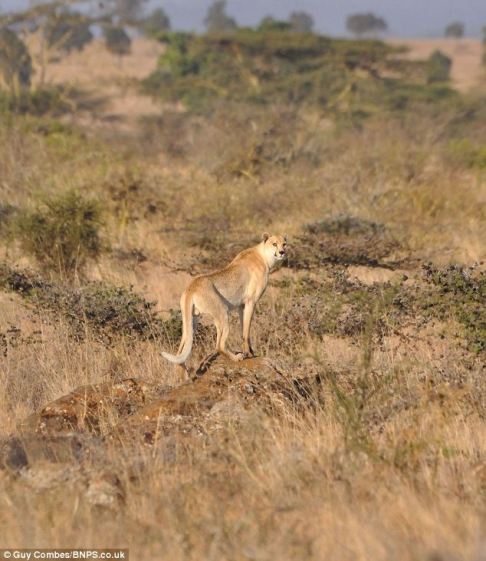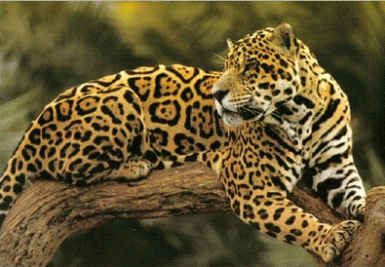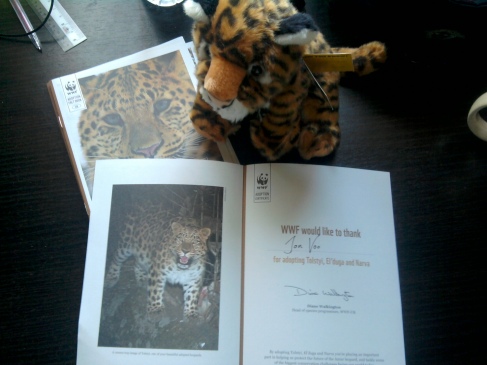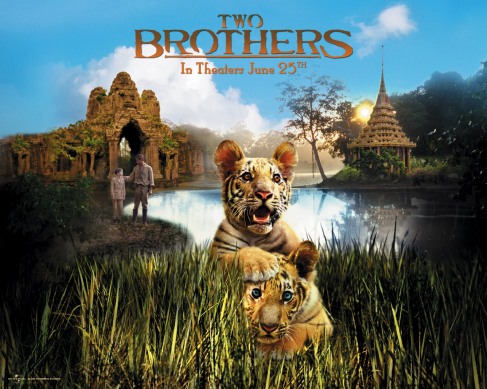The sheriff who issued a shoot-to-kill order after dozens of exotic animals — including Bengal tigers, mountain lions and bears — escaped from an Ohio farm defended his decision Wednesday, saying “we were not going to have animals running loose.”
Sheriff Matt Lutz said the owner of Muskingum County Animal Farm near Zanesville, Terry Thompson, appeared to have set the animals free and then taken his own life.
“It is still, still not a completely secure area,” he said.
The sheriff told an afternoon press conference that as many as 56 animals on the farm may have been set loose. Authorities tracked down and killed 48 of them: 18 rare Bengal tigers, 17 lions, six black bears, three mountain lions, two grizzlies, one wolf and one baboon.
The animals were buried on the Thompson’s property at the request of his wife, the sheriff said.
By Wednesday afternoon, only two animals were unaccounted for — a wolf and a monkey who may be carrying herpes B virus, Lutz said.
Four deputies with assault rifles in a pickup truck went to the 40-acre farm after the first calls came in at 5:30 p.m. Tuesday.
Later Tuesday, there were more than 50 law enforcement officials — including sheriff’s deputies, highway patrol officers, police officers and officers from the state Division of Wildlife — involved in the search of the farm and surrounding area, often in heavy downpours.
Lutz said that when the deputies arrived, there was about an hour and a half of daylight left. He said officers had to shoot some animals at close range with their sidearms.
“These are 300-pound Bengal tigers that we had to put down,” he said.
“I gave the order on the way here that if animals looked like they were going out, they went down … We could not have animals running loose in this county, we were not going to have that,” Lutz added.
He said that shortly before the press conference they had tried to tranquilize a “huge,” “very aggressive” adult tiger, but it “just went crazy” and so officers “put it down.”
Lutz added that when they first arrived on the scene, his officers did not have tranquilizers with them as they are not normally carried.
He also said one large cat was hit by a vehicle on a nearby highway.
Flashing signs along area highways told motorists, “Caution exotic animals” and “Stay in vehicle.”
Three school districts in the region and some private and special schools canceled classes after the news broke.
The preserve in Zanesville, about 55 miles east of Columbus, also had cheetahs, wolves, giraffes, camels, orangutans and chimps.
Earlier, Lutz said a caretaker told authorities the animals had been fed on Monday.
Neighbor Danielle White, whose father’s property abuts the animal preserve, said she didn’t see loose animals this time but did in 2006, when a lion escaped.
“It’s always been a fear of mine knowing (the preserve’s owner) had all those animals,” she said. “I have kids. I’ve heard a male lion roar all night.”
Tom Stalf, senior vice president of the nearby Columbus Zoo, told NBC’s TODAY show that people should be careful, particularly because the animals themselves would be afraid.
“These are all adult carnivores, so when we talk about the lions and tigers as well as bears, they are all dangerous, especially that they are now out of their area, their enclosures that they were normally in, so they are panicking as well,” he told the show.
“They’re definitely going to not be used to where they are at, so they are going to be scared, they’re panicking, trying to figure out what is going on. They’re going to be searching for a place to settle down and trying to, you know, just to calm down a little bit,” Stalf added.
The Humane Society of the United States on Wednesday urged Ohio to immediately issue emergency restrictions on the sale and possession of dangerous wild animals.
“How many incidents must we catalogue before the state takes action to crack down on private ownership of dangerous exotic animals,” the Humane Society’s Wayne Pacelle said in a statement.
Article taken from http://www.msnbc.msn.com/id/44953925/ns/us_news-crime_and_courts/t/sheriff-defends-order-shoot-bears-tigers/#.T4QS6Pun9IE
Personally, I understand why the sheriff took that decision and I respect his decision. It was his job to take precautions and ensure the safety and welfare of the people.
However, that doesn’t stop me from feeling a deep sense of loss and disappointment that so many of the animals had to be killed.
I think Tom Stalf, VP of the Columbus Zoo, really summed up how the animals were feeling at that moment. They did not have idea what to do and like lost children, they could either defend themselves or try to get away. Unfortunately, both options just weren’t feasible. What was even more pitiful is that some of these animals curled up in confusion next to their dead friends, in hopes of seeking company and protection.
I think this incident should drive home (if it hasn’t already before) the fact that wild animals and humans are not meant to be together. There is a fine difference between conservation of wild animals and treating them as exotic pets.
It is a wonder indeed why there are still people out there who find this so hard to comprehend!
JV.












